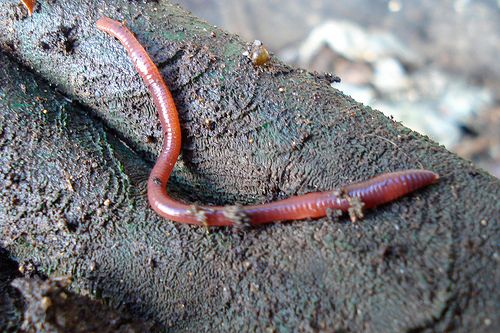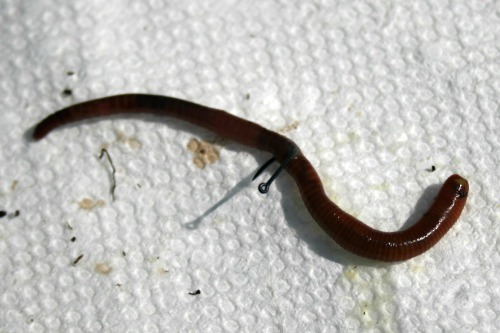Stock Up on Gear with Lake Hickory Bait for Your Next Adventure
Stock Up on Gear with Lake Hickory Bait for Your Next Adventure
Blog Article
Red Wigglers 101: Whatever You Need to Know for Thriving Gardens
Red wigglers, or Eisenia fetida, play a crucial role in lasting horticulture practices, acting as reliable decomposers that convert natural waste right into important vermicompost. Recognizing their habitat, nutritional choices, and the myriad benefits they use can change your horticulture approach (Red Wiggler Express). As these worms thrive in certain conditions, their treatment and monitoring are essential for maximizing their payments to soil health. The concern remains: what actions can you take to harness the full possibility of these remarkable organisms in your own yard?
Understanding Red Wigglers

Red wigglers prosper in settings rich in organic material and moisture. Red Wiggler Express. They possess a distinct gastrointestinal system that allows them to process food scraps swiftly, eliminating castings that are packed with crucial nutrients such as nitrogen, phosphorus, and potassium. These castings improve dirt structure, improve water retention, and foster valuable microbial activity, every one of which add to robust plant wellness
Moreover, red wigglers can endure in varied problems, making them versatile to different horticulture practices, including indoor and exterior composting systems. Their capability to take in large quantities of natural waste everyday placements them as important allies for both home garden enthusiasts and industrial cultivators. By integrating red wigglers into horticulture efforts, one can dramatically boost dirt fertility and support sustainable horticulture practices.
Ideal Habitat for Red Wigglers
Developing an ideal environment for red wigglers is important for maximizing their composting capabilities and general health and wellness. Red wigglers thrive in wet, dark, and well-aerated environments, which carefully resemble their natural environments in fallen leave litter and rotting raw material. A suitable environment should give a temperature variety between 55 ° F and 77 ° F(13 ° C to 25 ° C), as severe temperatures can emphasize or harm the worms.
The bed linens product, such as shredded newspaper, cardboard, or coconut coir, need to be kept damp but not excessively wet, as excessive dampness can lead to anaerobic conditions detrimental to worm health. In addition, a pH level between 6.0 and 7.5 is ideal, making sure a balanced setting.
Appropriate aeration is equally crucial; it enables oxygen blood circulation and stops the build-up of unsafe gases. A container or bin made for vermicomposting ought to have water drainage holes to get rid of excess moisture and promote air movement. Regular monitoring of these conditions is essential for maintaining a growing red wiggler population, inevitably enhancing their performance in damaging down organic waste and enhancing yard soil.
Dietary Requirements and Preferences

Red wigglers show certain preferences; they are especially keen on softer, decomposing materials over more difficult or more fibrous substances. It is necessary to prevent feeding them citrus peels, onion, and garlic in large quantities, as these can be damaging. Furthermore, meat, milk, and oily foods must be excluded, as they can attract pests and create undesirable smells.
(Lake Rhodhiss Bait)Eco-friendly materials, such as veggie scraps, offer nitrogen, while brownish products, like cardboard and dried out fallen leaves, supply carbon. By catering to their nutritional needs, garden enthusiasts can foster a thriving population of red wigglers in their compost systems.
Advantages of Using Red Wigglers
The exceptional advantages of utilizing red wigglers in horticulture expand much beyond their role in composting. These versatile microorganisms contribute dramatically to dirt wellness, improving nutrition availability and advertising microbial activity. By aerating the soil as they tunnel, red wigglers boost drainage and root penetration, developing an optimum atmosphere for plant development.
In addition, red wigglers are reliable recyclers of natural waste, converting it into nutrient-rich spreadings that act as an excellent all-natural plant food. These spreadings contain valuable microorganisms and important nutrients, such as nitrogen, phosphorus, and potassium, which are important for plant growth. The slow-moving launch of nutrients from worm spreadings ensures a steady supply, decreasing the risk of nutrient leaching and advertising sustainable gardening practices.
Using red wigglers fosters a more lasting gardening technique by decreasing reliance on chemical fertilizers and advertising a closed-loop system, where waste is changed into beneficial sources. In general, including red wigglers right into gardening techniques provides a wide range of environmental and agricultural benefits.
(Red Wiggler Express)
Composting With Red Wigglers

To initiate a successful vermicomposting system, select an ideal container with appropriate air flow and drainage. The ideal environment for red wigglers includes a wet, dark setup with temperatures between 55 ° F and 77 ° F. Begin by layering shredded paper, cardboard, and food scraps, making sure a balanced mix of carbon and nitrogen-rich products.
Red wigglers thrive on veggie peels, fruit scraps, coffee grounds, and eggshells, while avoiding meat, dairy products, and see page oily foods that can bring in parasites. Routinely monitor moisture levels; the bed linen needs to be damp but not soggy. Harvest worm spreadings every couple of months by separating the worms from the compost, which can then be used directly in yards or kept for later use.
Applying vermicomposting not only decreases landfill waste however likewise enhances garden dirt, advertising healthy plant development and lasting horticulture practices. Embrace this environment-friendly approach to boost your gardening ventures.
Verdict
In recap, red wigglers are vital organisms for improving yard performance with effective composting. Their details environment needs, dietary choices, and considerable advantages contribute to lasting gardening methods. By making use of red wigglers, gardeners can significantly improve soil high quality and nutrient accessibility, cultivating healthier plant growth. Embracing the method of vermicomposting not just supports waste decrease yet also promotes an environmental equilibrium within garden communities, eventually bring about flourishing and resilient yards.
Report this page